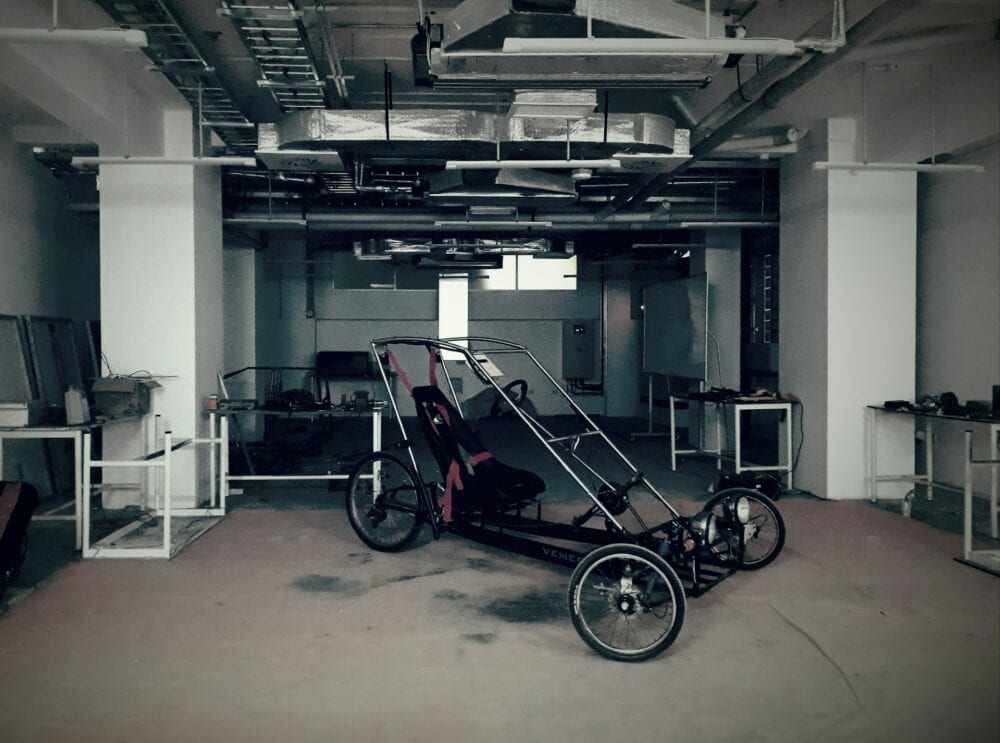In today’s technological age, nurturing children’s interest in Science, Technology, Engineering, and Mathematics (STEM) is essential. One exciting and educational way to do this is by engaging them in hands-on projects like building a solar-powered car. Children can learn about renewable energy, engineering principles, and problem-solving skills by building a car that runs on solar energy.

This article will provide an in-depth guide to building a solar-powered car, from understanding the basics of STEM education to the step-by-step process and learning outcomes.
Understanding the Basics of STEM Education
STEM education encompasses a multidisciplinary approach that focuses on integrating science, technology, engineering, and mathematics in real-life contexts. It aims to foster critical thinking, creativity, collaboration, and problem-solving skills in students. By engaging in STEM projects like building a solar-powered car, children can develop a deeper understanding of these subjects and their applications in the real world.
The Importance of STEM for Kids
Introducing children to STEM at an early age is crucial because it builds a strong foundation for future academic and career opportunities. STEM education nurtures curiosity, creativity, and perseverance, essential qualities for success in the 21st century. Additionally, it helps children develop practical skills, including logical reasoning, data analysis, and innovation, which are highly valued in various industries.
Key Concepts in STEM
STEM education encompasses various key concepts that are fundamental to all STEM disciplines:
- Science: Understanding the natural world through observation, experimentation, and analysis.
- Technology: Utilizing tools, machines, and digital resources to solve problems and improve efficiency.
- Engineering: Applying scientific and mathematical principles to design and create solutions for real-world problems.
- Mathematics: Using logical reasoning, measurement, and calculation to solve problems and make predictions.
Science, as a key concept in STEM, plays a vital role in helping students develop a deep understanding of the natural world. Students learn to question, hypothesize, and analyze data through hands-on experiments and observations. They gain valuable insights into the scientific method and how it can be applied to various real-life situations. Whether it’s studying the behavior of plants or investigating the properties of matter, science empowers students to explore the wonders of the universe and make meaningful connections to their everyday lives.
Technology, another crucial concept in STEM, equips students with the tools and resources needed to navigate the digital landscape of the 21st century. From coding and programming to using software and hardware, students learn how technology can be harnessed to solve problems and improve efficiency. By engaging in technology-focused projects, students develop computational thinking skills and become adept at leveraging technology as a powerful tool for innovation and problem-solving.
The Science Behind Solar-Powered Cars
Solar-powered cars harness the sun’s energy through photovoltaic cells or solar panels attached to the vehicle. These cells convert sunlight into electricity, which then powers the car’s motor. Understanding the science behind solar energy and its role in transportation is crucial for building a solar-powered car.
How Solar Power Works
Solar power is harnessed through the use of solar panels, which are made up of multiple photovoltaic cells. When sunlight hits these cells, it excites electrons, creating an electric current. This direct current (DC) is then converted to alternating current (AC) through an inverter, allowing it to power various devices, including electric motors in solar-powered cars.
The Role of Solar Energy in Transportation
Traditional cars rely on fossil fuels, which contribute to pollution and climate change. Solar-powered cars offer a more sustainable alternative by utilizing clean, renewable energy. By harnessing solar power, these vehicles reduce their carbon footprint and contribute to a greener future.
One of the fascinating aspects of solar-powered cars is their ability to generate electricity even when the vehicle is not in motion. This is made possible by the solar panels’ ability to absorb sunlight and convert it into electrical energy. The energy generated can be stored in batteries, allowing the car to continue running even when the sun is not shining.
Moreover, the efficiency of solar panels has significantly improved over the years, making solar-powered cars a viable option for everyday transportation. Advancements in technology have led to the development of high-performance photovoltaic cells that can convert a greater percentage of sunlight into electricity. This means that solar-powered cars can now travel longer distances and operate more efficiently than ever before.
Materials Needed for Your Solar-Powered Car Project
Before embarking on your solar-powered car project, it is essential to gather the necessary materials. Consider sourcing environmentally friendly materials that align with the principles of sustainability and conscious consumption. Additionally, prioritize safety by following proper handling procedures.
Sourcing Environmentally Friendly Materials
Look for materials that are recyclable, biodegradable, or made from renewable resources. This includes using recycled plastic for the car’s body, biodegradable lubricants, and sustainable packaging for components.
Recycled plastic is an excellent choice for the car’s body as it reduces the demand for new plastic production, which contributes to environmental pollution. By opting for biodegradable lubricants, you can ensure that any potential leaks or spills during the car’s maintenance will not harm the environment. Additionally, using sustainable packaging for the components will minimize waste and promote responsible consumption.
Safety Precautions When Handling Materials
When working with materials such as adhesives, wires, or cutting tools, it is crucial to prioritize safety. Children should be supervised by an adult, and safety gear such as goggles and gloves should be worn to prevent accidents. Establish clear safety guidelines and ensure a clean and organized workspace.
Adhering to safety precautions is essential to prevent any injuries or accidents during the construction of your solar-powered car. By supervising children and ensuring they wear appropriate safety gear, you can create a safe and enjoyable environment for them to learn and explore renewable energy. Maintaining a clean and organized workspace will not only enhance safety but also improve efficiency and productivity.
Step-by-Step Guide to Building a Solar-Powered Car
The following step-by-step guide will help you navigate the process of building your own solar-powered car. Building a solar-powered car is not only a fun and educational project, but it also promotes sustainability and renewable energy. So, let’s dive into the details and get started!
Preparing Your Workspace
Begin by setting up a clean and well-organized workspace that provides ample room for assembly. A clutter-free environment will make the process smoother and more enjoyable. Gather all the tools and materials required for the project, ensuring everything is easily accessible. This includes items such as screwdrivers, pliers, wires, a soldering iron, and of course, the solar panel and motor.
Assembling the Car’s Structure
Now it’s time to start constructing the car’s frame using recycled plastic or other lightweight and durable materials. You can follow design plans or let your creativity shine by coming up with your own unique design. Remember to leave enough space for the motor, wheels, and solar panel. The car’s structure should be sturdy enough to withstand the weight of the components and provide a stable platform for the solar panel.
Installing the Solar Panel
Attach the solar panel to the car’s structure, ensuring it is securely fastened. Position the panel in a way that maximizes exposure to sunlight, as this will optimize energy generation. It’s important to consider the angle and orientation of the solar panel to capture the most sunlight throughout the day. You may need to adjust the panel’s position during different times of the year to account for changes in the sun’s position.
Wiring and Connecting the Components
Now comes the exciting part – wiring and connecting the components! Carefully connect the motor to the car’s frame, making sure all the wires are properly insulated and secured. Connect the solar panel to the motor, allowing the generated energy to power the car. This is where your soldering skills may come in handy to ensure strong and reliable connections. Take your time and double-check all the connections to avoid any potential issues later on.
Testing and Troubleshooting Your Solar Car
Once the car is assembled and the solar panel is in place, it’s time to test the functionality of the motor and solar panel. Connect the car to a battery or a power source and observe how the solar panel converts sunlight into energy to power the motor. Ensure all connections are secure and troubleshoot any issues that arise. This is a great opportunity to encourage children to think critically and creatively to solve problems, fostering their problem-solving skills and scientific curiosity.
Remember, building a solar-powered car is not just about the end result, but also about the journey and the valuable knowledge gained along the way. So, enjoy the process, embrace the challenges, and have fun while exploring the fascinating world of renewable energy!
Learning Outcomes and Benefits of the Project
Building a solar-powered car not only provides a hands-on experience but also fosters several learning outcomes and benefits:
Skills Acquired from the Project
Through the process of building a solar-powered car, children can develop skills such as critical thinking, problem-solving, teamwork, and creativity. They also gain a deeper understanding of STEM concepts and real-world applications.
The Impact of Hands-On Learning
Hands-on projects like building a solar-powered car engage children actively in their learning. This experiential approach boosts motivation, curiosity, and long-term retention of knowledge. It also encourages children to explore and pursue careers in STEM fields, shaping our future innovators and problem-solvers.
By engaging in fun and educational STEM projects like building a solar-powered car, children not only learn about renewable energy and engineering principles but also develop crucial skills that will benefit them academically and professionally. Through hands-on learning, they become active participants in their education, developing a lifelong love for STEM subjects and a passion for creating a more sustainable future.



